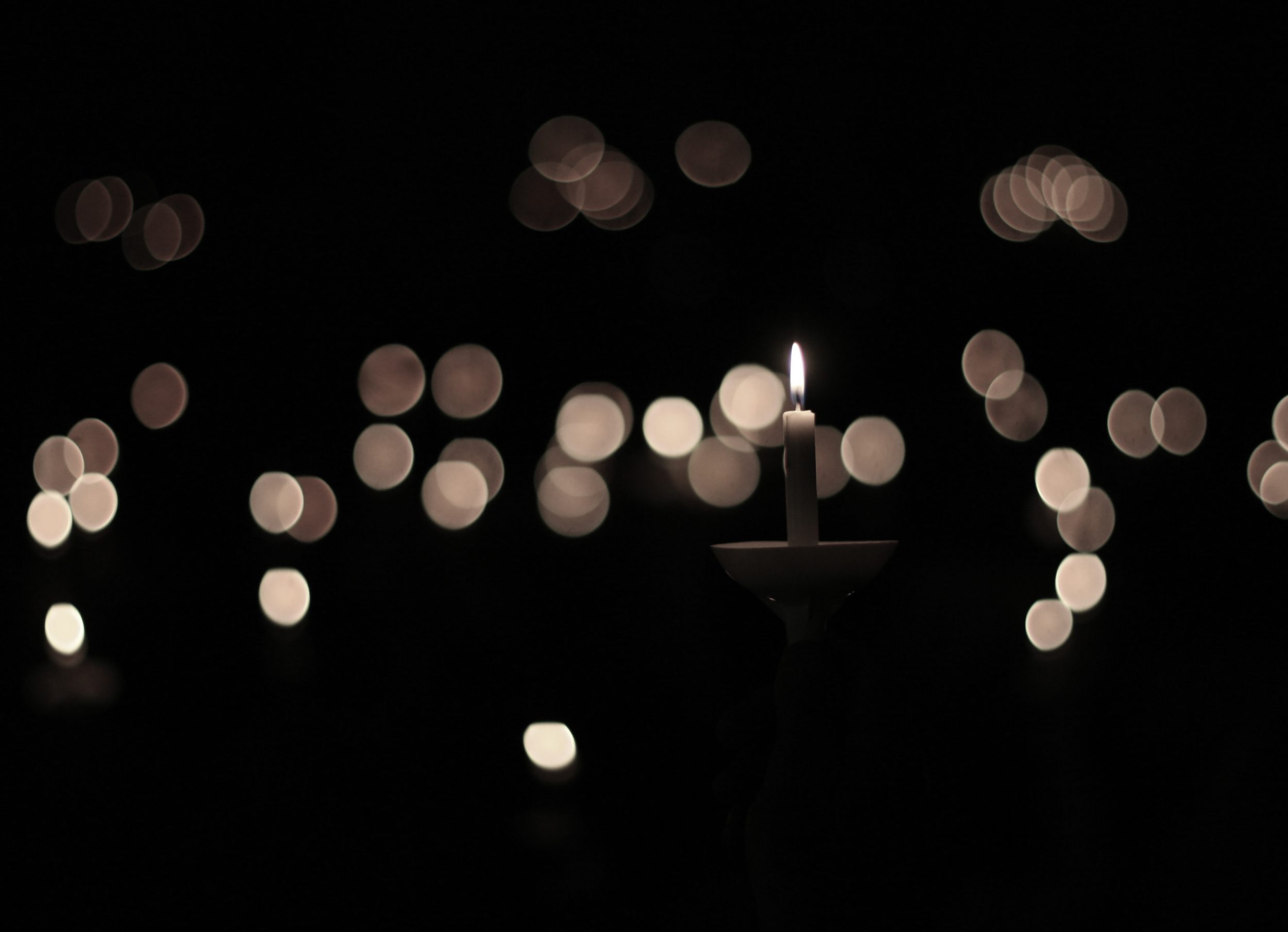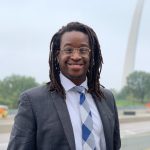With mass shootings rising almost 50 percent and a surge in shooting homicides during the COVID-19 pandemic, the Biden administration announced increased gun control measures in April 2021 to address “the gun violence public health epidemic.” Noticeably, the federal government’s factsheet on the new measures did not mention one group responsible for numerous shooting deaths each year: law enforcement. Fatal shootings by police are rarely framed as instances of gun violence, but they remain one aspect of this longstanding epidemic facing this country, with far-reaching and devastating consequences.
This is personal for us.
On January 21, 2017, Ronnie Shorter was getting ready for bed in his home in Greenville, Mississippi, when he heard something outside while on the phone with his mother. Little did he know that five police officers with the local police department were waiting there and would eventually shoot him dead in front of his home after he opened the door.
Marqueese Alston was walking down the street in broad daylight in Washington, D.C. He had just dropped his daughter off with his family. But June 12, 2018 would be the last time he would see her or any of his loved ones again. A fleet of six officers arrived in two police cars, drove past Marqueese, jumped out of their vehicles, chased him, and shot him over a dozen times. Careful not to release any details of why police targeted and took Marqueese’s life, the police changed their story in public statements trying to justify their actions and assassinate his character, as if death weren’t enough.
Ronnie is Emanuel’s cousin. Marqueese is Kenithia’s son. These men are our family.
In the aftermath of their deaths, both of our families have fought to piece together what exactly happened on the day police picked up their guns and ended our loved ones’ lives. We have tried to get records and videos, searching for answers, only to be turned away. Behind all of the challenges and heartache we have faced is the reality that our loved ones might still be here if someone with a gun had not shown up that day.
Police departments have long framed the narrative on gun violence as solely a community problem. The truth is that police-based gun violence has long been a key contributor to our colloquial, shared understanding of gun violence.
By now these numbers should seem familiar: Police in the United States kill approximately 1,000 people each year, and almost 95 percent of people killed by police are with a gun. Black people are killed at a disproportionate rate, almost three times more likely to be killed by police than a white person. At this point, about one in every 1,000 Black men — like those we lost — can expect to be killed by police. Despite a global pandemic, U.S. police fatally shot people at the same levels “in 2020 as they did in the same period from 2015 to 2019.” And by another count in The Washington Post, this annual toll actually “reached a new high” in 2020.
The harm these shootings inflict extends beyond the families of those left behind. Killings by police negatively impact academic performance and educational outcomes for students who live close to the site of the killing. Recent research shows killings by police “may have population-level consequences for pregnancy loss.” Perhaps most obviously, entire Black communities suffer negative mental health consequences following killings by police and the news coverage that follows.
What would policing look like if we redefined the term 'gun violence' to include police-based violence?
But what would policing look like if we redefined the term gun violence to include police-based violence? The horrific murders of George Floyd, Breonna Taylor, and too many others provided a platform for nationwide demands to defund, dismantle, and disarm the police in the summer of 2020. In 19 countries, this is already a reality: Police do not carry guns typically, and these countries rarely suffer from killings by police. Even with high rates of gun ownership in some of these countries, unarmed police are able to address violence without resorting to guns. Realistically, disarming the police will not stop all killings, but it is the type of intervention that addresses one root cause of a problem that is deeply entrenched, not unlike more mainstream calls for gun control.
Beyond full disarmament, access to guns could be restricted — similar to calls to restrict gun access to those with a history of violence. Derek Chauvin, the police officer who murdered George Floyd, had a history of violence and abuse that largely went unchecked. Although many police officers may never fire their gun, too many have shot and killed multiple times. A ban against carrying guns for police officers with violent backgrounds or histories of citizen complaints or shootings could limit the chance of fatal shootings by police. Such bans could also be based on internal policies, or state and local laws limiting what guns law enforcement can access, rather than broad-based statutory demands that rely on criminal violations and thus increase the number of people who can get pulled into our system of mass incarceration.
Restricting police access to certain guns and other weapons could also have an impact. The increasing militarization of police means local police have access to assault rifles, flashbang devices, and even military tanks. The federal 1033 program has provided over $7 billion “in surplus military equipment and goods, including armored vehicles, rifles, and aircraft” to over 8,000 law enforcement agencies across the country. As understandable as it is that a normal citizen should not have a military-grade weapon, it should be understandable that a local police officer should not as well. Such weapons are said to support a militarized mindset that encourages police to “shoot first and think later” — prompting police to view the communities they’re supposed to protect and serve as hostile, enemy territory.
Understanding shootings by police as a type of gun violence invites us to see the value of policing alternatives to violence and harm. Programs like Cure Violence use public health approaches to stop the spread of violence, resulting in marked decreases in interpersonal gun violence. MH First is a new program of California’s Anti Police-Terror Project providing non-police first response for people with mental health crises. And one pilot program in New York City that relies on mental health specialists rather than police officers to respond to crisis situations is showing a lot of promise. To the extent we can limit citizen interactions with police while creating alternatives that actually keep us safe, it is possible that we may see a decrease in the number of fatal shootings by police.
Understanding shootings by police as a type of gun violence invites us to see the value of policing alternatives to violence and harm.
These forward-thinking approaches are a far cry from the more typical policy suggestions for police-based gun violence that tend to dominate the national conversation — such as a strong legal standard barring unnecessary police use of force, de-escalation techniques, reductions in officer bias through training, better administrative mechanisms for reviewing use-of-force incidents to ensure abusive officers can be disciplined and prosecuted, and more transparency around policies, procedures, and use-of-force incidents. There may be examples of some or all of these approaches being implemented well and in concert. But every year another 1,000 names join the ever-growing list of people killed by police, raising questions about their validity and effectiveness.
If the 2020 uprisings taught us anything, it is our urgent, national need to look beyond reforms that only tinker with the edges. Prohibiting access to guns for officers with a history of violence, restricting access to certain firearms like assault weapons to police departments, and reliance on public health approaches to address gun violence rather than criminalization may offer us the path forward that has eluded us thus far. Despite gun control’s racist history and present, redefining gun violence this way opens up alternative approaches to deal with a longstanding epidemic that, to this day, seems to lack a definitive cure.
We can never bring our loved ones back, but we can fight against state-sanctioned police violence so others’ lives are not lost. Understanding shootings by police as one of the many permutations of gun violence in our country opens some doors into how to get to the root of the issue and stop killings by police — and thus spare other families the heartache we know so well.
Image: Unsplash


